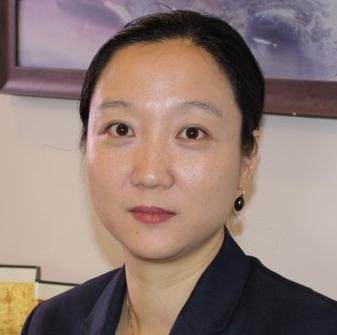This year’s Association of Southeast Asian Nations (ASEAN) summit, held in Singapore on April 27 and 28, saw more underwhelming continuity than transformative change. Rather than confronting China over its increased militarization of the South China Sea disputes, the regional body adopted tough language against America’s trade protectionism, while pursuing further its blossoming relations with China.
Under the Philippines’ chairmanship last year, the ASEAN largely sung to the tune of President Rodrigo Duterte’s national priorities, refused to stand up to China’s destabilizing behavior in the South China Sea, and remained largely silent on Myanmar’s campaign of ethnic cleansing against the Rohingya people.
The ASEAN instead committed much of its attention to combatting transnational crime and terrorism, pushing back against Western criticisms of regional states’ human rights and democracy records, isolating North Korea over its provocative behavior, and the improvement of ASEAN-China ties. Yet, major geopolitical flashpoints in the South China Sea were left largely untouched.
Thus, when Singapore took over the ASEAN’s chairmanship this year, there were initially high hopes for evenhanded and coherent leadership in the region. Many hoped that the city-state, which prioritized the promotion of a “rules-based order” in Asia as its core agenda, would steer the ASEAN towards greater centrality in shaping the regional security architecture.
Pity the Chairman
To be fair, the year is far from over, and there are many reasons for cautious optimism over Singapore’s chairmanship of the ASEAN. After all, the city-state is legendary for its highly competent and pro-active diplomatic corps as well as a coterie of world-class strategic thinkers.
As a leading global trading hub, Singapore’s leadership has consistently prioritized the advocacy of peace and stability in the region. Throughout the decades, it has invested in capacity-building and better-quality regional integration via the Initiative for ASEAN Integration (IAI), which aims to narrow development and institutional gaps among the highly diverse membership of the ASEAN.
Among the ASEAN’s founding fathers, the late Singaporean Prime Minister Lee Kuan Yew was arguably the most relevant. This is partly due to the fact that he remained in power longer than almost all his contemporaries. But more importantly, it was his strategic foresight that guided the ASEAN through its difficult and dizzying evolution throughout the Cold War decades.
For him, the ASEAN served as a critical mechanism to mediate among great powers, socialize revisionist states into accepting the basic rules of the liberal international order, and, in his own words, protect the interest of “shrimps” and “smaller fishes” against the “big fishes.”
Crucially, Singapore hasn’t been party to any of the major geopolitical conflicts in the region, whether it’s the water wars in the Mekong River or the even more prickly disputes in the South China Sea. This has put the city-state in a unique and important position to mediate and manage the resolution of inter-state spats, like no other regional actor.
The results of the 32nd ASEAN summit, however, were underwhelming. To be fair, this is largely due to the consensus-based decision-making structure of the ASEAN, which limits the ability of rotational chairmen to radically alter the regional body’s direction. Nonetheless, the ASEAN chairman has the indispensable power to set the annual policy agenda, craft and publish a chairman statement, and, in the event of a deadlock among member states, issue a separate statement that reflects its view of the majority view in the region.
Back to Reality
This year, however, Singapore and the broader region prioritized, quite blatantly, trade over geopolitics. In their discussions and subsequent joint statement, the ASEAN leaders reiterated their commitment to upholding the global free trade regime in accordance with Singapore’s vision of a “rules-based” order in Asia.
Only weeks before, during the Boao Forum (April 10) in Hainan, China, Singaporean Prime Minister Lee Hsien Loong underlinedthe importance of multilateralism and free trade, while praising China for taking “further steps” in opening up its economy.
Under Singapore’s leadership, the ASEAN expressed how “deeply concerned” the region was “over the rising tide of protectionism and anti-globalization sentiments” across the world, especially in America. In the joint statement, the Southeast Asian leaders underscored their “continued support for the multilateral trading system,” while encouraging “the swift conclusion” of the Regional Comprehensive Economic Partnership (RCEP) negotiations, which involve 16 trading nations across the Asia-Pacific region, with China at its very center.
The ASEAN also called for the “early implementation” of the ASEAN-Hong Kong-China (HKC) Free Trade and Investment Agreements, which were signed last year. They also reiterated the importance of maintaining and strengthening existing free trade agreements between ASEAN and major dialogue partners, especially China.
The ASEAN’s recognition of China’s rise as a key economic partner went hand-in-hand with graceful accommodation of the Asian powerhouse’s rising assertiveness in adjacent waters. Far from criticizing China’s massive reclamation activities as well as militarization of contested islands in the South China Sea, the ASEAN only “discussed the matters relating to the South China Sea,” while taking “note of the concerns expressed by some Leaders on the land reclamations” in the area, notably without mentioning China at all.
If anything, the ASEAN went so far as to praise China for its openness to rudimentary confidence-building measures, such as the conclusion of the ASEAN-China hotlines among claimant states’ foreign ministries and the operationalization of the Joint Statement on the Application of the Code for Unplanned Encounters at Sea (CUES).
The Southeast Asian leaders were highly upbeat regarding the (still open-ended) negotiations for a Code of Conduct in the South China Sea (COC). In their joint statement, regional leaders expressed how the ASEAN is “encouraged by the official commencement of the substantive negotiations” towards the early conclusion of a COC, yet there were absolutely no details as to the nature of the proposed agreement; whether it would be legally-binding at all and, if so, its legal reference point; or any timeline, no matter how generic, for the negotiation of a final agreement.
Yet, the ASEAN has remained largely silent on China’s deployment of electronic jamming equipment, surface-to-air-missiles and antic-cruise ballistic missiles systems, and other advanced weaponries to contested territories in the South China Sea.
What’s increasingly clear is that the ASEAN has chosen to prioritize the expansion of economic relations with China rather than confront it over the South China Sea disputes. Yet, Southeast Asian leaders have shown remarkable willingness to stand up to a major power when it comes to criticizing America, in defense of the global free trade regime.
Half a century since its establishment, the Association of Southeast Asian Nations is at a crossroads. After a euphoric decade of optimism in the 2000s, with the regional body presenting itself as the engine of integration in the Asia-Pacific, many are now beginning to question the ASEAN’s centrality. More crucially, the regional states are increasingly becoming a willing partner in bringing about a post-American regional order with China at its center.


